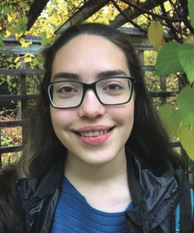CINEMATOGRAphy iN ANCHORAGE
Anchorage is not a city immediately associated with the arts. Most people, both outside and inside of Alaska, think of Anchorage as more of a tourist destination than anything else. However, Anchorage has many small, thriving industries and communities of its own. One of these is the film community, which I have been a part of for almost four years now.
I moved to Anchorage in 2012 with my family, after living in various parts of the lower 48 as a child. My father was a pilot in the U.S. Air Force, so my family moved frequently. My father is also Puerto-Rican, while my mother is white Dutch American. I grew up close to my Dad’s side of the family, seeing them often at holidays, but my father never made an effort to teach me or my siblings Spanish, or to involve us in Puerto-Rican culture outside of family gatherings twice or three times a year. I am not bilingual, and since moving to Alaska I have not made a lot of Latino friends or found a place in the community. My family currently lives in Eagle River, where North Americans are the overwhelming majority.” I am a script supervisor and assistant director. This means I am responsible for coordinating schedules and different departments on a film and keeping track of continuity in the script and filming of a movie. I got involved in film the way most people in Anchorage do, I got to know someone who was already involved. For me, it was my film teacher at King Career Center (now King Tech High School), who taught me the basics and offered me a volunteer job on a feature film shooting out in the Mat-Su Valley in the summer of 2017. That job introduced me to several other members of the independent film community and taught me important skills for working on a feature film. I have always been very passionate about storytelling. It is a way for us to connect with others. It is a way to understand ourselves and those around us. Filmmaking is one of the most intricate and difficult forms of storytelling, but it is alive and well in Alaska. It is hard to make a living as a filmmaker in Alaska. Every film I have worked on, mostly short films, has been a volunteer position. Every filmmaker in Anchorage makes films because they love doing it, not for the money. Because of this, the community is close-knit and welcoming. However, it is not very diverse. On the first film I ever worked on, in 2017, I was one of three women in a crew of around twenty people. On short film shoots, where crews are much smaller, I am often the only woman in the room. I can only think of one film I have ever worked on where there was another Latino besides myself on the crew. The Anchorage film community, like the American film industry in general, is predominantly white and male. It can be very alienating to be the only Boricua woman in a community I am so involved in. But I make films because I love telling stories, and I believe it is important to make art even in difficult circumstances. Stories reflect real life. They allow us to empathize with people very different from us. And with every film that I work on, I have an opportunity to improve the community itself. I have the opportunity to meet new people, some of whom are more like me. Many people in Anchorage are interested in filmmaking, and it’s important to make a place for people who want to learn more about writing scripts, working with a camera, acting, or any other skills. A few events, including Home Made Film Night in March and the upcoming 24-Hour Film Royal, exist to try and involve new people who are interested in film production. The film community is lonely sometimes, but lonely is not the same as hostile, and we always have the chance to improve. By continuing to tell stories, we can make Anchorage a better place. |
